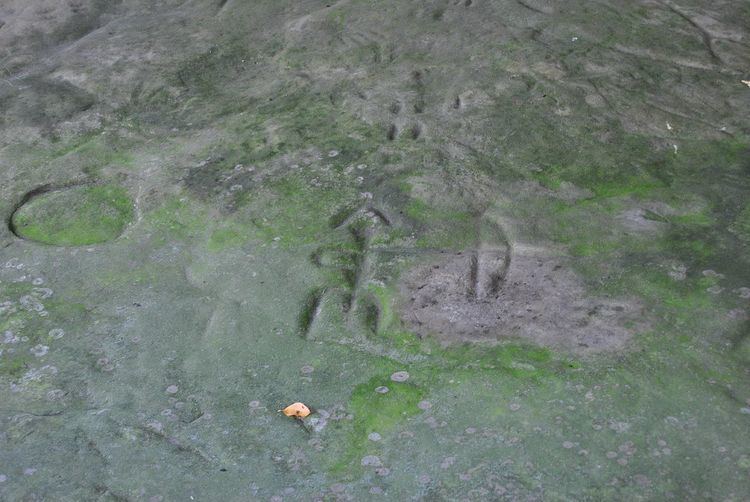Nearest city Cass City, Michigan Area 97 ha Added to NRHP 25 January 1971 | NRHP Reference # 71001024 Phone +1 989-856-4411 | |
 | ||
Location Lower Peninsula, Sanilac County, Michigan USA Governing body Michigan Department of Natural Resources Address 8251 Germania Rd, Cass City, MI 48726, USA Management Michigan Department of Natural Resources Similar Meridian‑Baseline State Park, Coldwater Lake State Park, Lake Gogebic State Park, Onaway State Park, Baraga State Park | ||
Sanilac Petroglyphs Historic State Park is a state park in Michigan containing Michigan's only known rock carvings attributable to Native American Indians. The park consists of 240 acres (0.97 km2) in Greenleaf Township, Sanilac County, in Michigan's Lower Peninsula.
Contents
The carvings, known as petroglyphs, were discovered by residents after a fire swept through the area in 1881 and revealed rocks bearing the designs. Because they are made in relatively friable sandstone, geologists have been able to determine that the carvings were made 300 to 1,000 years ago, dating back to the Late Woodland Period. There is concern that without preservation, the carvings may be worn further away and lost.
The petroglyphsEdit
The petroglyphs include depictions of swirls, lines, handprints, flying birds and bow-wielding men, likely carved over many years by unknown peoples passing by the site while traveling along the nearby Cass River on a 1,000-square-foot (93 m2) sandstone rock in Sanilac County, Michigan between 300 and 1,000 years ago. The petroglyphs are the only known such carvings in the state of Michigan.
Conservation and vandalismEdit
The sandstone slab in which the petroglyphs were carved is a soft stone that allowed Native Americans to cut it easily. But that softness has proven problematic as it has allowed generations of visitors to damage the slab with graffiti. Graffiti combined with natural weathering has made the actual petrogyphs difficult for visitors to see. The state has made a series of improvements to the site to protect the slab, including a wooden pavilion erected in the mid-1990s and a chain-link fence surrounding the petroglyph site.
